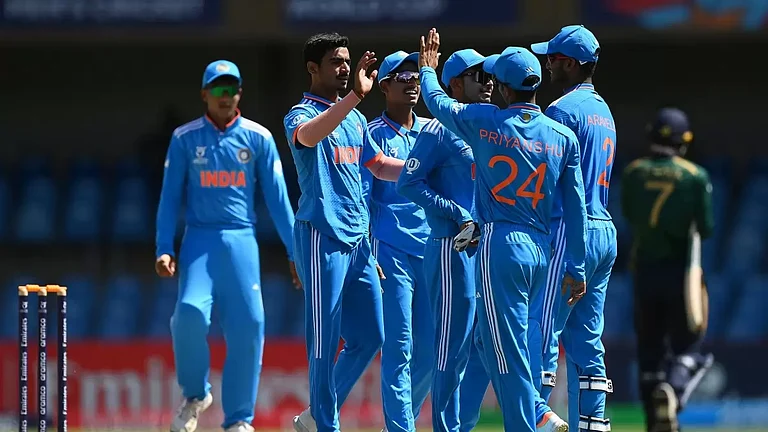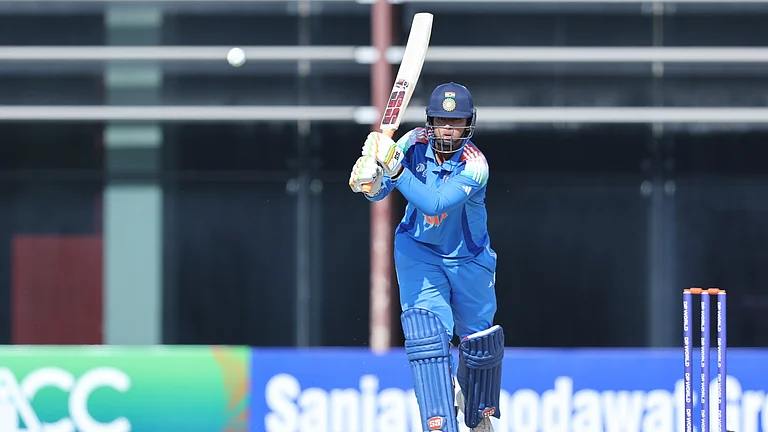This book is not Bharadwaj's story. I wish it was. Rather, it is the former law minister's testament to himself to show that he was—and is—well versed in the shastra of law at the very highest levels, quite capable of not just exposing the errors of the likes of Arun Shourie on the Muslim Maintenance Shah Bano case (which occupies a large part of the book), but also the fallacies of Supreme Court judges and politicians (including the legendary A.K. Sen) whom he regarded as adversaries and subversives.
Bharadwaj's essays on the Uniform Civil Code, the judiciary, the legal profession or the lengthy annexures of materials on judicial appointments have little to offer that add new insights and institutions to our present discomfitures in trying to find solutions which will suffer scrutiny.
On judicial activism, the former law minister does not take us much further than Chief Justice Ahmadi's somewhat apologetic Zakir Hussain lecture that the alarmed should treat the new-found 'judicial activism' as a temporary corrective. No doubt, Justice Ahmadi's interpretation of the constitutional text as one which—on a plain reading—gives primacy to politicians in the matter of judicial appointments is technically correct but misses the judicial wood for the political trees. The constitutional text cannot determine its meaning which must respond to the necessities of the times. The Constitution seeks to safeguard the independence of the judiciary. For Bharadwaj to repeat Justice Bhagwati's statement that the view of the Chief Justice of India must be the 'determining factor' is to state a formula without elucidating its implications. What of Justice Bhagwati's view that judges cannot be transferred without their consent?
The controversy does not end there. The political primacy view of the First Judges case (1981) was substituted for one which gave the Chief Justice of India primacy in making high judicial appointments but obliged the 'chief' to consult at least his two senior colleagues. What could have been the basis of a new informal judicial collegiate turned out to be a disaster during Justice Ahmadi's term when the Chief Justice actually became the determining factor. Bharadwaj does not tell much of the inner story. He says he was responsible for blocking the appointment of a junior Bombay judge to the Supreme Court in 1986. Others involved tell it differently. The stories of the two supersessions for the post of Chief Justice of India in 1973 and 1977 are well-known. But Bharadwaj tells of two judicial appointments in 1985 and 1991 when the Chief Justice's advice was not acted upon. Eventually—almost certainly in Justice Bhagwati's term—the government simply waited for the next chief to be appointed.
Bharadwaj was obviously pivotal though just a minister of state. There is a sting in Bharadwaj's summary sentence: "All chiefs desire to (take an independent stand) provided we support (them)". Chief Justices endowed with fantastic powers of patronage in making appointments to the higher judiciary (more so since 1993) have—with one notable exception—tended to monop-olise the power of judicial appointments. Again the Chief is now in a more heliocentric position. The truth is, we have totally destroyed old traditions on judicial appointments without evolving new ones. How this came about is a story that needs to be told. But it remains untold in this book.
Not too much can be said about the endless saga of judicial reforms which resulted in innumerable unimplemented reports. There should be a proper disciplinary machinery to examine complaints against the judiciary—many effective international models exist which have adaptive potential. Our times represent the judiciary's finest hour which will determine its role in the apparati of Indian democracy. Though judges have given Indian democracy more than was expected, judicial standards are falling. Hopefully, this will pass. What will not pass is the need to develop strong democratic and transparent relations between executive and judiciary. We need a judicial commission to appoint and discipline the judiciary. We also need good judges and an executive which combines the grace of restraint with democratic fortitude.
Bharadwaj's very readable book is a disguised version of how Congress and Bharadwaj dealt with law and justice. It is not just the form of the book as an anthology of essays that prevents the entire story from being told. Sometimes there is a temporary comfort in knowing less rather than more.






















